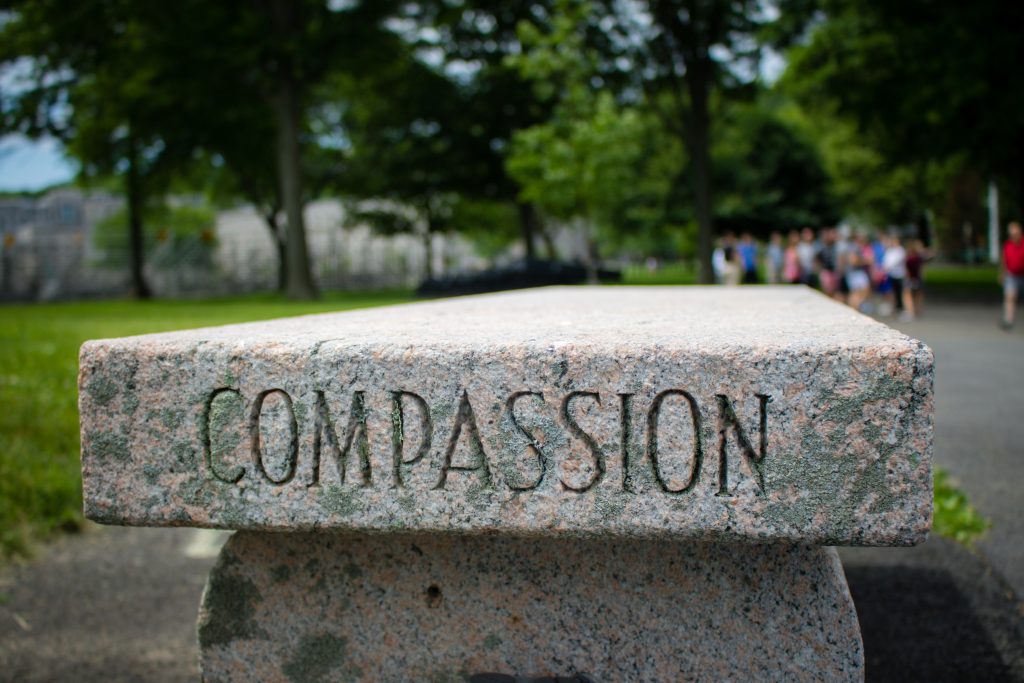
During a busy, demanding shift, the code of ethics may not be at the top of your mind. But that doesn’t mean it’s not underpinning every decision.
A Vital Tool
Revised by the ANA in 2015, The Code of Ethics for Nurses with Interpretive Statements, or “The Code”, gives language to what caregiving with integrity looks like within ever-changing and challenging health care environments.
“Compassionate care demands that we practice in an ethical way,” says Leslie Stein, Psy.D, RN, at Chicago Read Mental Health Center. “To ensure the safety and trust of our patients, practicing ethically is essential.”

The Code helps nurses see the values they put into practice every day—and offers guidance for how to offer the best care within the larger social context.
“It is important we practice with compassion, be honest and ethical, be responsible and accountable in our practice while keeping rights, welfare, health and healing of patients/clients our primary concern,” says Margaret Miller, RN, MSN, retired and now volunteer faith community nurse.
Even more, The Code serves as a tool both for the nursing professional and for the person.
“It’s a guide for nurses explaining what nursing should be like; it gives nurses something to strive for as a nurse and as a human being,” says Ana Maria Romero, APRN, RN.

“What we strive to be as nurses should be what to strive to be as a human being and the care/respect we should give to our fellow human.”
Along with guiding ethical actions in everyday settings, The Code is the standard bearer for the nursing profession as a whole.
“It holds the nursing profession to high standards,” says Joyce Tam, MSN, FNP-BC, CRRN, at Advocate Aurora Medical Group.
Powerful Provisions for Ethical Nursing
According to the ANA website, “The Code is particularly valuable in today’s healthcare environment because it clearly and eloquently reiterates the fundamental values and commitments of the nurse (Provisions 1–3), identifies the boundaries of duty and loyalty (Provisions 4–6), and describes the duties of the nurse that extend beyond individual patient encounters (Provisions 7–9).”
Provision 1
Practice with compassion and respect for the inherent dignity, worth, and unique attributes of every person.
Provision 2
My primary commitment is to the patient, whether an individual, family, group, community, or population.
Provision 3
Promote, advocate for, and protect the rights, health, and safety of the patient.
Provision 4
Authority, accountability, and responsibility for nursing practice; makes decisions; and takes action consistent with the obligation to provide optimal patient care.
Provision 5
Owe the same duties to self as to others, including the responsibility to promote health and safety, preserve wholeness of character and integrity, maintain competence, and continue personal and professional growth.
Provision 6
As an individual and through collective effort, establish, maintain, and improve the ethical environment of the work setting and conditions of employment that are conducive to safe, quality health care.
Provision 7
In all roles and settings, advance the profession through research and scholarly inquiry, professional standards development, and the generation of both nursing and health policy.
Provision 8
Collaborate with other health professionals and the public to protect human rights, promote health diplomacy, and reduce health disparities.
Provision 9
The profession of nursing, collectively through its professional organizations, must articulate nursing values, maintain the integrity of the profession, and integrate principles of social justice into nursing and health policy.
Not surprisingly, for many, when asked which Provisions speak to them most during this moment in their nursing careers, Provisions 1 through 6 stand out.
As Stein says, “Provision 1 through Provision 6. In 40 years of nursing practice, [I] have never lost my love of caring for my patients. Providing safe staffing levels, a safe work environment, and parity of care for my patients with mental illness is so important to me.”
Living The Code
So, how do ANA-Illinois members use the code in their everyday practice?
“As a nurse practitioner who works in PM&R, I provide holistic care on a daily basis while helping my patients to become as independent as possible in their daily routine,” says Tam.
Ethical, compassionate caregiving in challenging situations is a daily practice that The Code helps nurses live every day. Romonica Dunn, of North Shore Healthcare, says that living the nursing code is primarily “through practice.”
“I feel I live the nursing code every day. The nursing code reflects how we should be to all people, not just patients when we’re working. Protecting human rights, advocating for others—these are actions we encompass daily in life,” says Romero.
Here’s one example of what that looks like in daily practice:
“I, as well as several others, recently observed change in behavior of one of our faith community members and approached her husband about how he was managing. Though she had recently had an appointment for her annual checkup, nothing was said about any mental changes,” Miller said. “Keeping as compassionate as possible, keeping her care and welfare foremost in mind, as well as his, I outlined for him first steps he needs to take on the path of caring for her. I have made myself available for further guidance as needed.”
Along with a powerful tool for advocating for patients, nurses use The Code every time they advocate for themselves, their wellbeing, and their profession.
“I posted it in my workplace and make reference to it often when dealing with a bureaucracy that frequently does not value the inherent worth of my patients or fellow nurses,” says Stein. “I am constantly fighting for safe staffing levels and environmental improvements to ensure the safe, high quality, ethical delivery of care at my place of employment.”
The Code serves as a trustworthy guide nurses can rely on in challenging times and in daily life.
